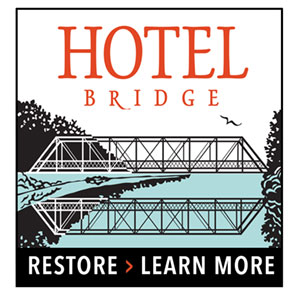A Short History of Leeds
Leeds, Massachusetts, is a geat neighborhood within the city of Northampton and the most distant from the center. Like Florence and Bay State, the other districts in the community with distinctive identities, its history is linked to the Mill River.
The exact boundaries of Leeds have never been agreed on. Whether the Veterans Hospital is in Leeds or Florence has never been resolved but Leeds definitely begins where Florence Street branches off from Route 9. It is also generally agreed that Maine’s Hill residents on Haydenville Road can also claim Leeds citizenship.
Except for the rare farmer or the hostelries on the turnpike to Albany, Leeds (and Florence as well), saw no significant settlement for a century and a half after the settlement of Northampton in 1654. With the arrival of the industrial revolution the river suddenly assumed great importance as the source of abundant waterpower.
The Mill River had always supplied power for the few mills where farmers could have their grains ground or, at a later time, their trees cut into lumber at sawmills. In the 19th century, the river became the powering agent for the production of paper, cotton and wool cloth, silk products, buttons, baskets, brass products, shovels and hoes, brushes, picture frames, emery wheels…in total, an extraordinary variety of manufactured products of all kinds.
In 1874 it all changed when a dam built in Williamsburg by the factory owners to provide a constant and regulated flow of water suffered a catastrophic failure that devastated the Mill River valley. The economy of the area was destroyed but the cost in human terms was worse. In Leeds alone, 51 people died in the raging floodwaters. The toll from the flood reached over 140 with 37 of the victims from Haydenville and Williamsburg found in Leeds and Florence. In 1999, memorials recalling the disaster and listing the names of the victims were erected in Leeds, Haydenville and Williamsburg. The Leeds Memorial is set on the bank of the Mill River in the very heart of the area where so many lives were lost.
If you drive up Main Street in the center of Leeds in the year 2000, you will find five dams (in varying condition) and five bridges in less than a half mile. The dams (Top Dam, Middle Dam, Bottom Dams and Cook’s Dam) are a legacy of the time when the Main Street of Leeds was lined with factories. Today the only reminders of that era are the few brick factory buildings on Water Street and the Leeds Village Apartments, an industrial bee-hive of years past on Main Street. The river, once of substantial depths, is now barely a foot deep in most areas as silt has filled the areas behind each dam.
Where once there were four grocery stores in the village’s center, now there are none. Where a depot once stood as a stop for the four passenger trains passing through the village each day on the way to Williamsburg there is now only a deserted roadbed.
Today, a libation to slake one’s thirst at the Northampton Country Club is the only reminder that once there were a number of places in Leeds where the dust of a day’s work could be washed away. While some of those oases were properly sanctioned like the Leeds Inn or the Warner and Moody Taverns of old there were others less restricted by the niceties of legal licensing.
Today few residents are aware that the neighborhood below Cook’s Dam near the Country Club is “Irish Town” or that the school rests on “Schoolhouse Hill”. Few identify their elevated neighborhood dominated by the Dimock Estate as “Yankee Hill.” Water Street has lost its identity as the “French quarter” of Leeds and who knows where “Howard’s Pasture” is, or “Crow Hill”, “Robert’s Meadow”, “The San”, or “Seven Houses”?
Who knows that the first Charlie Chan of the movies, Warner Oland, found his bride, Edith Shearns, right here in Leeds? He returned often to his home opposite the Chart Pak factory where he had his own private tennis court. He was also a frequent golfer at the Warner Meadow Golf Club (now Look Park) and the Northampton Country Club.
Leeds also produced a Governor of Massachusetts. Thomas Talbot was a member of the Executive Council from 1864 to 1869, Lieutenant Governor from 1872 to 1873, Acting Governor, 1874, and Governor of Massachusetts in 1879-1880. He lived on Water Street from 1831-1835.
There was a time when Leeds was not generally regarded as the most desirable place to be from. But that was long ago. In 2000 Leeds is regarded as one of Northampton’s most desirable residential locations. The proof may be found in the Transfers of Property reported each week in the Registry of Deeds. The cost of land and the price of homes would be inconceivable to those who lived in Leeds in earlier eras. Homes in the hundreds of thousands of dollars are common in this little town where, in 1932, houses belonging to the defunct silk company were being sold throughout the community for hundreds, not hundreds of thousands of dollars.
Those who were born and raised in Leeds always knew there was no better place to live. It just took the rest of the world a little longer to make that discovery.
For those interested in more information about Leeds, we heartily recommend the work by Robert P. Emrick “Leeds, A Village Within the City of Northampton, Massachusetts.”
December, 2000



